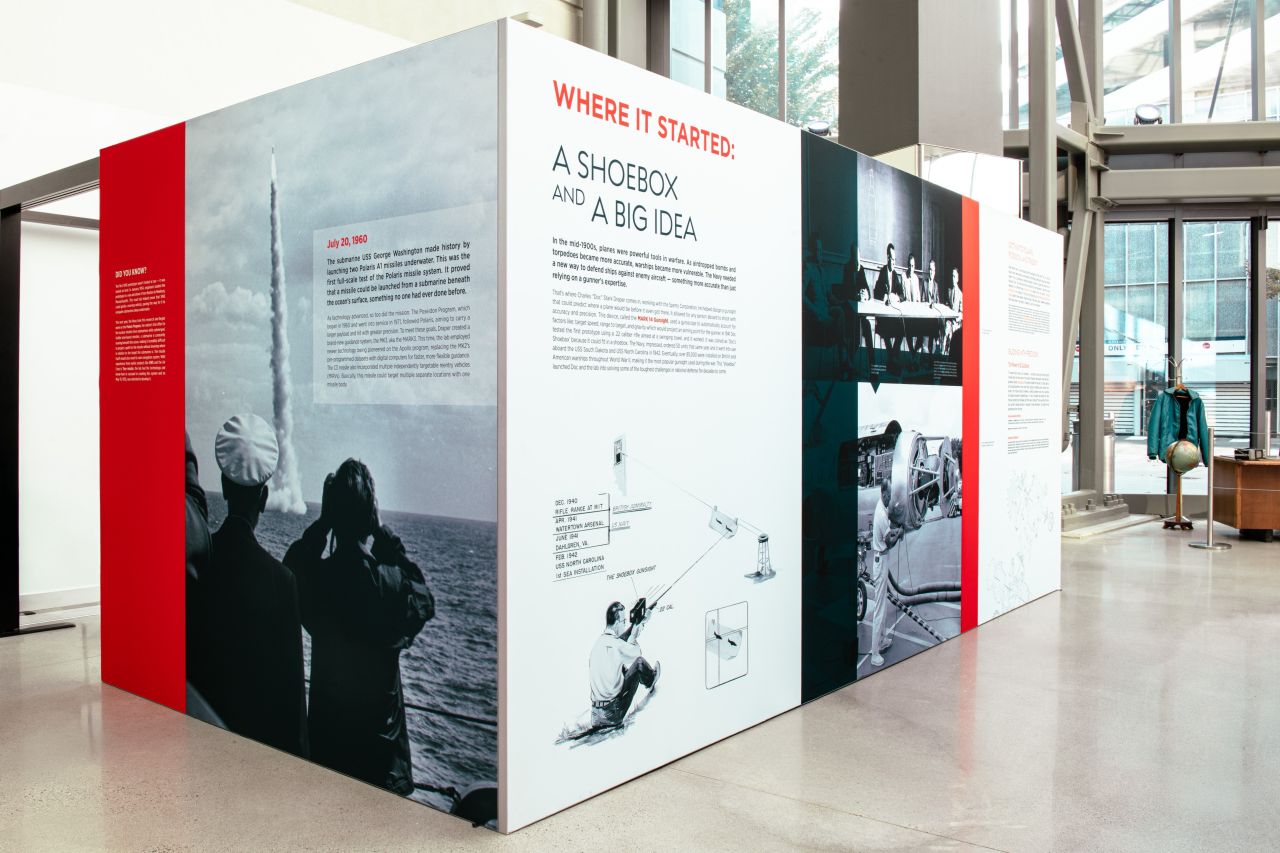New Museum Exhibit Explores Draper’s History of Service to the U.S. Navy
CAMBRIDGE, Mass. – A new Draper Museum exhibit highlights Draper’s enduring partnership with the United States Navy. The displays capture pivotal moments in this relationship, including nearly 70 years of groundbreaking guidance and navigation developments for the Navy’s fleet ballistic missiles (FBMs).
The Laboratory’s work with the Navy began in the 1940s, when Charles Stark “Doc” Draper developed the Mark 14 gunsight. The gunsight used the disturbed-line-of-sight principle, which helped the operator to point the gun at a moving target’s future location. The Mark 14 enabled ship-based anti-aircraft gunners to shoot down enemy aircraft with significantly greater success in World War II.
Doc Draper’s pioneering work on inertial navigation led the Navy to seek his help in developing an inertial navigation system for submarines in the 1950s. The resulting Submarine Inertial Navigation System (SINS) proved that inertial guidance could deliver reliable position information in a submerged vessel. The Navy subsequently sought Draper’s support to develop the guidance system for what would become the first submarine launched ballistic missiles (SLBMs).
The Polaris MK1 guidance system designed and developed by Draper was deployed with the Polaris A1 and A2 missiles in the early 1960s. Rapid improvements in gyroscopes and digital computers enabled Draper to develop smaller instruments that were more sensitive and accurate. The resulting MK2 guidance system was half the size and weighed 40% less than the MK1. Further improvements led to the MK3 system used in the Poseidon C3 missile deployed in 1971.
The Navy’s fifth-generation FBM, the Trident I C4, deployed in 1979, had twice the range of the Poseidon but required the same degree of accuracy. To meet this demand, Draper developed a new guidance system—the MK5—that incorporated a star sensor to correct any errors in the initial launch position. For the MK6 guidance system used in the Trident II D5 missile deployed in 1990, Draper developed improved inertial instruments and incorporated these into an all-digital electronics assembly. The MK6 MOD 0 guidance system has been a stalwart component of the Navy’s SLBMs – a legacy that continues to the present with the MK6 life extension program.
The Navy exhibit further expands the Draper Museum, adding to the existing display of Draper’s innovations and contributions to space exploration, including the Apollo Program, and biomedical engineering. The new displays include a Mark 14 gunsight as well as 1/15 scale models of the Navy’s FBMs. The Museum also features highlights from Draper’s history as part of the Massachusetts Institute of Technology and an independent non-profit laboratory.
The Draper Museum is open to the public on Thursdays from noon to 4:30 p.m. Visitors can take a free self-guided tour to learn about Draper’s pioneering contributions to America’s national security. Draper is located at 555 Technology Square, Cambridge, Mass.
About Draper
Draper is a non-profit research, development, and manufacturing company that solves some of the nation’s most important challenges. With more than 2,500 employees working in collaboration across 12 locations, Draper delivers transformative, mission-driven solutions that successfully meet our customers’ requirements. These efforts focus on four critical mission areas: Strategic Systems, Space Systems, Electronic Systems, and Biotechnology Systems. To extend our legacy into the future, the Draper Scholars program engages with the next generation of innovators while DraperSPARX™ seeks to partner with startups and small businesses that can further our mission. To learn more about Draper, visit www.draper.com.
Released November 4, 2025

